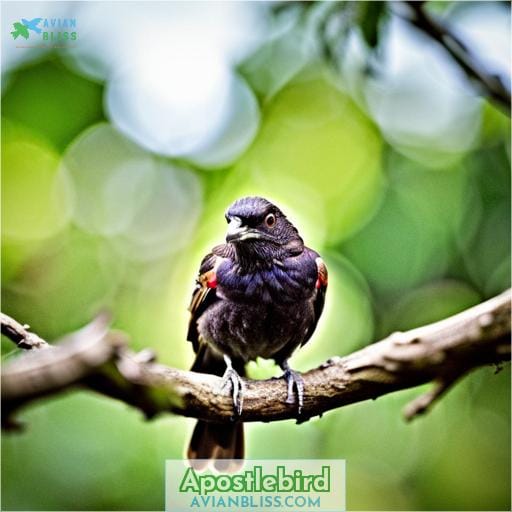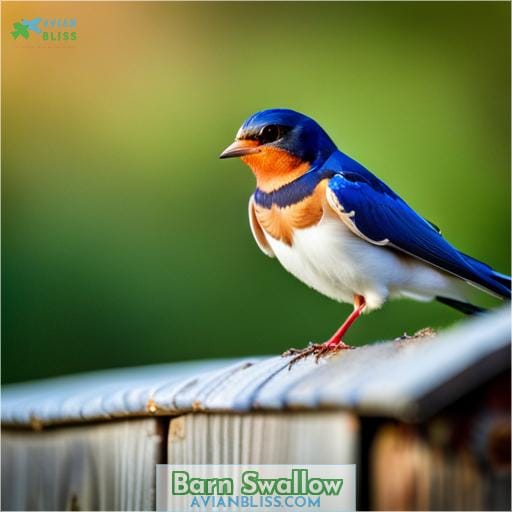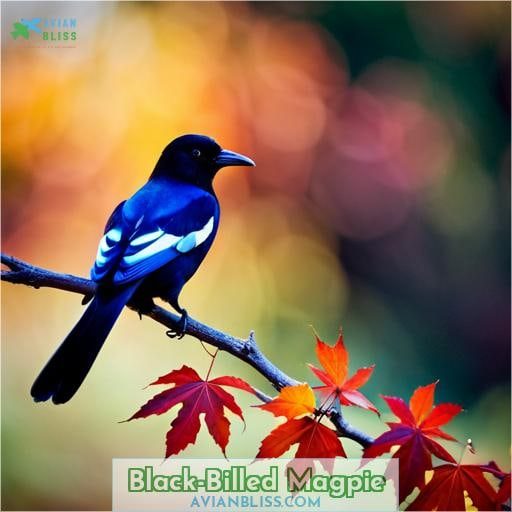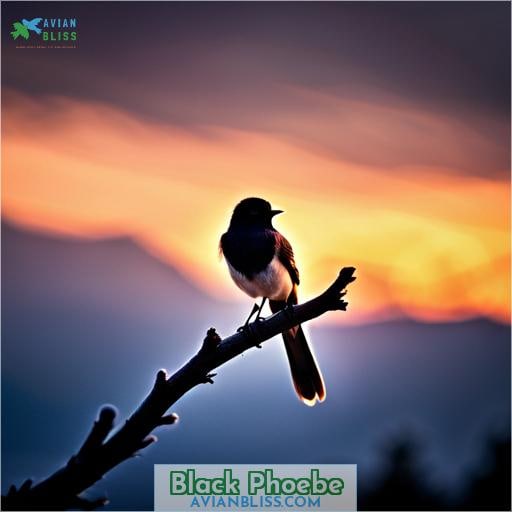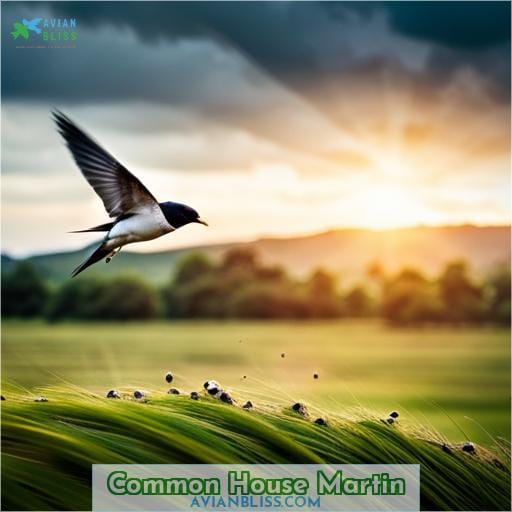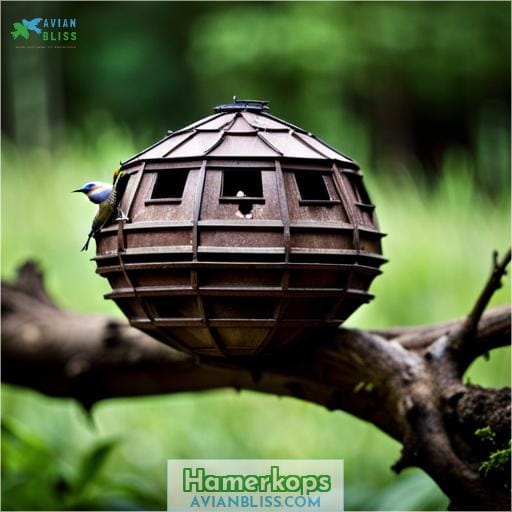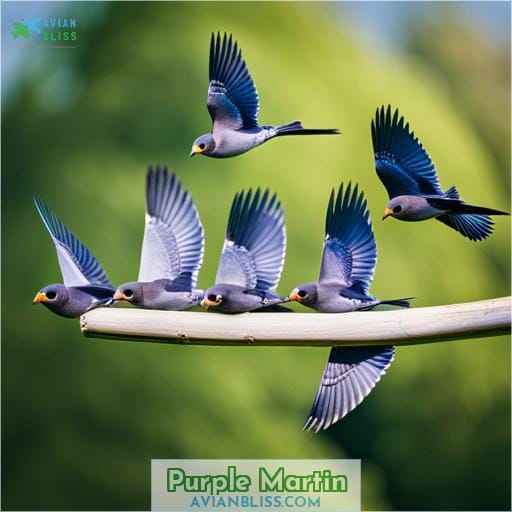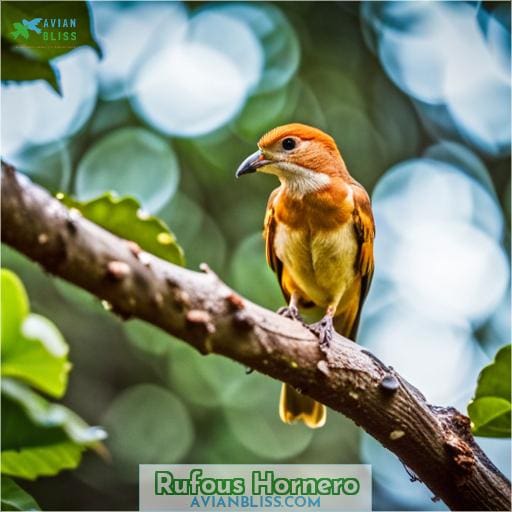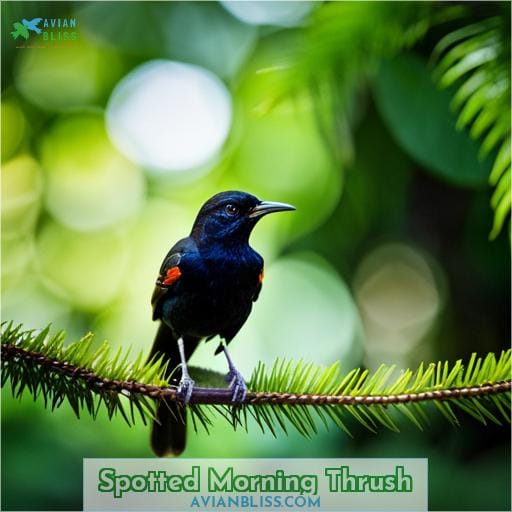This site is supported by our readers. We may earn a commission, at no cost to you, if you purchase through links.
 Don’t you know, we feathered friends have the neatest nests around! From twiggy to mud, our nests are the cat’s meow.
Don’t you know, we feathered friends have the neatest nests around! From twiggy to mud, our nests are the cat’s meow.
Take the cliff swallow, for example. With their goggle-looking mud nests hugging viaducts and cliffs, they construct mini-metropolises for their colonies. You’ll even spot these mud maestros swarming the skies with their swallow brethren.
See, us birds aren’t so bird-brained when it comes to nest-building. We can get down and dirty with the best mudslingers out there! Now, what other winged wonders whip up mud huts? Let’s take a gander, shall we?
Table Of Contents
- Key Takeaways
- American Flamingo
- Apostlebird
- Barn Swallow
- Black-Billed Magpie
- Black Phoebe
- Cave Swallow
- Cliff Swallow
- Common House Martin
- Eastern Phoebe
- Hamerkops
- Purple Martin
- Rufous Hornero
- Spotted Morning Thrush
- White-Winged Chough
- Frequently Asked Questions (FAQs)
- How do different bird species obtain the mud they use for nest building?
- What are some of the unique properties of bird saliva that help with mud nest construction?
- How do parent birds regulate temperature and humidity levels in mud nests for their eggs and chicks?
- Why do some bird species reuse old mud nests while others build a new nest each season?
- What are some of the biggest threats to mud nesting birds and their nesting habitats nowadays?
- Conclusion
Key Takeaways
- Mud nests are skillfully constructed by various bird species, showcasing their engineering prowess.
- Different bird species use different materials and techniques to build their mud nests.
- Bird saliva aids in mud nest construction, catalyzing adhesion and resisting bacteria.
- Mud nests provide a safe and regulated environment for the well-being of eggs and chicks.
American Flamingo
You’re impressing a friend with how the solitary American Flamingo cleverly constructs those iconic 12-inch nest mounds on the ground using mud from shallow lakes. Skillfully gathering mud with its beak, the flamingo sculpts a raised cone able to support its solitary egg.
With keen awareness, it selects a mudflat location to blend into the colony’s synchronized defensive tactics. Though ground nesting poses chick-rearing challenges, the ingenious flamingo employs adaptive food-gathering strategies to nourish its young.
American flamingos demonstrate remarkable nest-building techniques and avian architecture.
Apostlebird
Hunting grubs in noisy groups, you’ve built communal mud nests high in tree forks to safely raise your young apostlebirds. Constructing your large, bowl-shaped communal structures from mud and grass in tree branch junctions gives multiple benefits.
The placement utilizes natural branch foundations, while the flock cooperation allows gathering copious mud and grass from nearby water sources.
Your nest dimensions accommodate multiple apostlebird pairs, with chambers for their pale blue eggs. Continually maintaining the nests with fresh mud and grass enables reuse for future seasons’ apostlebird nesting habits.
Barn Swallow
You find graceful swirls taking shape as she precisely places each mud pellet. She expertly weaves together mud, grass, and feathers to construct the open cup nest. She uses the adhesive properties of mud to form the nest’s structure, selecting a beam or ledge in an old barn or under an eave.
As a highly social bird, she nests in colonies and flocks together with other swallows. The completed nest has an inner lining of grasses and feathers for insulation and camouflage. Later, she will lay a clutch of eggs in the well-built nest and raise her hatchlings in the security of the colony.
The durability and reuse of old nests enable future generations of swallows to thrive.
Black-Billed Magpie
The black-billed magpie expertly crafts sturdy domed nests from mud, grass, and twigs. With adept nest-making skills, the magpie selects specific materials that promote predation defense and insulation.
Twigs form the sturdy base, while mud and grass provide weatherproofing and camouflage. The magpie vocalizes throughout the meticulous building process, using saliva to cement materials into a durable cup-shaped shelter.
Though magpie populations face concerning declines, these intelligent birds continue displaying their artistic talents through intricate nest construction.
Black Phoebe
Tis the female Black Phoebe constructing cups of mud on cliffs, lining them for the hatchlings. She gathers mud and moss chunks in her beak, mixing them with her sticky saliva to cement the materials together.
With sturdy walls taking shape, she adds soft feathers and plant fibers, weaving an insulating, concealed nest.
Although year-round residents, Phoebes must compete for prime nesting spots on cliffs and bridges. Throughout incubation, both parents take turns feeding, gathering insects to nourish their young.
- The female alone builds the nest over 2-3 weeks.
- Feathers and fibers provide insulation and cushioning.
- Adults feed hatchlings with captured insects.
Cave Swallow
Leaving behind the black phoebe’s mud cups, your attention turns inland to the curved elongated entrances of cliff crevices and caves where another mud-nesting bird resides.
Here, you’ll discover the cave swallow inhabiting underbelly colonies, instant tribes forming in thermal nest spots. Using mud, grass, and feathers, they construct cup-shaped structures with durability akin to their inland cousins, the cliff and common house martins.
As with the phoebe’s nests, durability comes from multiple layers. Yet you find them not on man-made structures, but settling into crevices, bonding with their kind.
Their hidden nests, while similar, exist apart, tucked into earth’s hollows.
Cliff Swallow
You’ll marvel at the communal cliff swallows cementing multitudes of mud nests under highway bridges.
- Skillfully sculpting half-gourd shaped nests.
- Artfully applying mud in thousands of trips.
- Meticulously molding the mud pellets.
- Diligently decorating with feathers for insulation.
With a deep affinity for social nesting, cliff swallows expertly construct their mud abodes using an ancient technique passed down through generations. They gather mouthfuls of mud near water and fly back repeatedly to their colony, adding the mud to build strong, durable nests.
The nests are cemented with saliva and cling under cliffs, bridges, and buildings across the continent.
Common House Martin
You adorn houses, farms, and caves in breeding colonies of 100 or more pairs with your mud-coated suspended nests. You skillfully construct an inverted cup shape of mud pellets under eaves and bridges that are reinforced with dried grass and feathers.
You artfully layer mud as a cement, smoothing the finishing touches. Aerial displays of swift dives and glides entice mates to these nests, where you incubate three to five eggs. Your insectivorous diet fuels migration across continents, spanning thousands of miles.
You adapt resourcefully across habitats, exemplifying avian ingenuity by engineering fortified mud nests in bustling populated areas. Your communal colonies and engineering reflect the mastery of a species thriving amidst dynamic ecosystems.
Eastern Phoebe
Both genders build the Eastern Phoebe’s cylindrical mud nests on man-made structures like bridges and barns. The phoebe expertly constructs these rocky nests using mud of the perfect consistency. She feeds on insects while gathering materials and building, communicating with her mate through call notes.
The birds vigorously defend their territory during nest construction. The eastern phoebe’s versatile use of mud allows crafting durable nests on flat man-made surfaces. The female lines the interior with softer materials like grass and feathers. Decorative touches like snake skins and mosses customize each nest.
The phoebes’ resourcefulness with mud results in safe nesting sites, aiding the species’ success across environments.
Hamerkops
O hamerkop, your immense six-foot mud dome nests are engineering marvels born of survival savvy. As Africa’s largest and most distinctive mud-nest builder, you display incredible creative problem-solving skills.
Mud nest studies and hamerkop theories reveal your resourcefulness in utilizing building materials and construction techniques. Your nest histories demonstrate complex planning in designing enormous yet cozy structures.
Though different in size and shape from the enclosed bowl-shaped mud nests of the rufous hornero, your megalithic architectural feats remain unmatched in the avian world.
Clearly, you’re master craftsmen, erecting stronghold masterpieces that ensure propagation against the odds.
Purple Martin
You swoop through the skies, gliding on warm currents as you survey the land below. A flash of iridescent purple catches your eye – a flock of Purple Martins searching for the perfect place to build their mud nests.
These avian architects carefully craft beautiful cylinder homes under eaves, in boxes, or on poles, using mud, twigs, leaves, and feathers. Agile and aerial, they dive and dart, gathering materials mid-air. Colony living aids in defending against predators.
You marvel at their crafting abilities, appreciating the engineering and survival skills required to construct durable mud nests each season.
Rufous Hornero
The crafty Rufous Hornero ingeniously engineers enclosed bowl-shaped mud nests on trees for its young. Skillfully constructing these enclosed nests provides protection, enabling the Rufous Hornero to thrive.
Nest availability allows breeding pairs to raise multiple broods in a season.
The enclosed structure helps evade predators seeking eggs and hatchlings.
Unique building techniques, like using its feet, form the nest walls.
Rather than settling territorial disputes, pairs cooperate in choosing nest sites.
When needed, the Rufous Hornero adapts its diet to obtain the nutrients required for nest building.
Unlike exposed nests of barn swallows and black phoebes, the Hornero’s engineering minimizes external challenges.
The resulting sturdy structure showcases the Rufous Hornero’s mastery of nest construction.
Spotted Morning Thrush
Lad, the Spotted Morning Thrush crafts its mud nests on thick branches, lining the insides with leaves. It seeks insulation and gathers loose soil to sculpt enclosed chambers within the nest. It chooses a sturdy branch and molds the mud into a secure cup, shaping the home in which its young will grow.
Though leaves may dry and crumble, they provide a cozy backing that protects the hatchlings. This species is particular in its preferences, unlike the American Robin, who hastily crafts a nest of odds and ends.
For the Spotted Thrush, the right materials matter. Examining the nests of the fourteen mud-building birds, each has evolved its own style to thrive.
White-Winged Chough
Y’all see how the White-Winged Chough’s cup-shaped mud nests sit high in trees for protection. Expertly crafted from mud composites, these architectural marvels utilize local clays blended with saliva and grass.
The choughs’ noisy squawks echo as they gather materials, their social dynamics on full display. Skilled chough architects carefully sculpt each chamber of the nest, repeatedly kneading the mud to achieve durable yet welcoming walls.
Within the canopies of eucalyptus forests, the nests blend into the habitat. Y’all can appreciate the ingenuity behind these elevated, camouflaged creations.
Frequently Asked Questions (FAQs)
How do different bird species obtain the mud they use for nest building?
You birdwatchers eagerly head to muddy marshes and wooded glens, binoculars in hand, seeking those feathered engineers gathering globs of wet earth in sturdy beaks. With mud-caked wings, they ferry the gooey payloads, sculpting snug, secure homes.
Your eyes sparkle witnessing nature’s artisans crafting exquisite dwellings from the humblest of materials.
What are some of the unique properties of bird saliva that help with mud nest construction?
By catalyzing molecular adhesion, your saliva enables wet mud to harden and interlock. Its mucins bind and stabilize the nest’s raw materials, while lysozyme resists bacteria – together, they secure a durable, sanitary home from the earth itself.
How do parent birds regulate temperature and humidity levels in mud nests for their eggs and chicks?
Mother birds delicately sculpt soft, insulating mud walls within their nests, tenderly cradling eggs and hatchlings like a womb. With each loving layer, they regulate temperature, trapping warmth against chilly nights.
Their artful adjustments balance humidity, sheltering chicks under earthen blankets until they’re ready to take flight.
Why do some bird species reuse old mud nests while others build a new nest each season?
You reuse old nests for efficiency, but build new ones when improved site and design beat marginal updating. Each year’s choice balances durability, effort, and site limits against family needs and instinct.
What are some of the biggest threats to mud nesting birds and their nesting habitats nowadays?
The biggest threats to mud-nesting birds are habitat loss from development and climate change, as well as competition for nesting sites from invasive species. Conserving wetlands and natural waterways is key to protecting their unique mud nest habitats.
Public education on protecting native species can make a real difference for the future of these amazing avian engineers.
Conclusion
Feathers flutter overhead as you gaze upward, mesmerized by the architectural feats of engineering displayed in avian mud nests. From the solitary mounds of flamingos to the communal tree homes of apostlebirds, you’ve witnessed the remarkable skills of 14 species and their mastery of mud as a building material.
Their nests, molded and sculpted using natural adhesives, offer a testament to the survival instincts of birds that make mud nests. With this glimpse into ornithological construction, you gain appreciation for the mud nests that allow birds to flourish.


